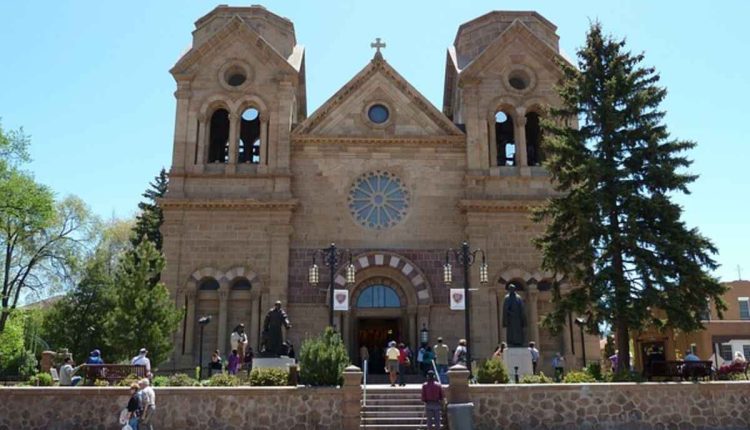Human occupation of New Mexico dates back at least 11,000 years. Over this period, various cultures have left archaeological remains behind them.
The State of Enchantment draws tourists with its ancient ruins, adobe towns, and Indian pueblos. Its landscape varies from 14,000-foot mountain peaks to deserts and grassy prairie.
Time zones provide a bridge for communication across long distances, and understanding local times makes for more effective business travel and international cooperation.
Time Zones
The world is divided into different time zones to synchronize daylight and darkness globally, facilitate international coordination, and provide daily benefits such as scheduling meetings or traveling across borders. While time zone differences can sometimes be frustrating, they’re essential in providing efficient communications across borders – and there are tools to assist people when adapting to time zone changes.
New Mexico lies in the Mountain Time Zone (UTC-7), Mountain Daylight Time, or MDT. While some counties in western New Mexico observe standard time, most of New Mexico uses MST. When daylight saving time kicks in during the spring/fall transition, New Mexico moves over to MDT but back again during the fall transition period.
New Mexico borders states that observe Daylight Savings Time, such as Colorado, Arizona, and Utah. However, parts of Arizona located within mountain time zones do not observe DST; also included within Navajo Nation territory and Hopi Reservation are some state offices that do not observe DST.
New Mexico falls under America/Denver time zone of the IANA time zone database, which corresponds with Denver. On March 14, 2021, America/Denver time zone commenced Daylight Saving Time by setting clocks forward an hour at 2:00 AM local time; this will remain active until November 7th, when standard time will resume again.
Daylight Savings Time
New Mexico observes Daylight Saving Time like most states in the United States, moving clocks forward an hour during summer months to maximize daylight use. Exceptions include the Navajo Nation and parts of Arizona within Sonora that remain on Mountain Standard Time without moving their clocks forward an hour during DST.
Time changes every two years have become a longstanding tradition in many parts of the country, yet not everyone agrees that this should continue. A bill has been submitted to New Mexico state legislature by Sen. Cliff Pirtle (R-Roswell). After passing in both houses of the legislature, it will be reviewed by an oversight committee in the House of Representatives.
People wishing to avoid the time zone switch can still adapt by adjusting their calendars, and meeting plans appropriately. However, this may not be easy in border cities with a timezone with Mexico.
According to a recent order issued by the Mexican government, Coahuila, Chihuahua, Nuevo Leon, and Tamaulipas near the border will continue observing DST until November 1st, when time changes to standard time. While Baja California, Ojinaga, and all other parts of Mexico will switch over permanently to Mountain Time (MT). As for other states within Mexico that observe DST at different times throughout the year, most will observe DST until that date when DST returns to standard time (ST).
Summer Time
If you plan to visit New Mexico, late autumn or early spring will likely offer the most favorable accommodation rates and temperatures for outdoor activities such as hiking and mountain climbing. Of course, visitors can experience its beauty all year long as there are numerous events and attractions throughout its borders to enjoy throughout the year.
As the summer winds down in Northern New Mexico, temperatures decrease gradually, and snow may accumulate at higher elevations. Conversely, temperatures in southern New Mexico rise rapidly, and you can expect dry and sunny conditions throughout the month.
Central New Mexico remains warm during October, offering sunny days at White Sands National Park. Meanwhile, winter has eased off some, but you should expect occasional chillier morning and nighttime conditions.
New Mexico lies within the Mountain Time Zone and, like many states across America, observes Daylight Savings Time by shifting the local time forward by an hour from UTC to MST when daylight saving is in effect. New Mexico’s IANA time zone ID is America/Denver, while clocks in Ciudad Juarez, Coahuila de Zaragoza, Tamaulipas, and Chihuahua/Nuevo Leon do not change when Daylight Savings ends.
Winter Time
New Mexico offers visitors a winter wonderland in the form of skiing and snowboarding on its snow-dusted mountain ranges. At the same time, its southern half features hotter temperatures with many sunny days year-round.
Winter finally starts to ease up in May, yet temperatures remain chilly at first light and evening. May is an excellent month for seeing northern New Mexico’s beautiful wildflower displays, while further south, the temperatures reach up to 97F (36C).
August is hot and wet, especially in the north, where temperatures surpass 86F (30C). Meanwhile, southern areas experience significantly drier conditions making this an excellent time to visit some of Virginia’s stunning beaches.
New Mexico falls within the Mountain Time Zone or, when using DST, America/Denver. It lies six hours behind Greenwich Mean Time. New Mexico observes Daylight Saving Time as part of Daylight Saving Time Week; clocks here switch over an hour ahead of other US states on March 1 at 2 am until November 1 at 1 am for one extra hour of sunlight each evening during summer months.


